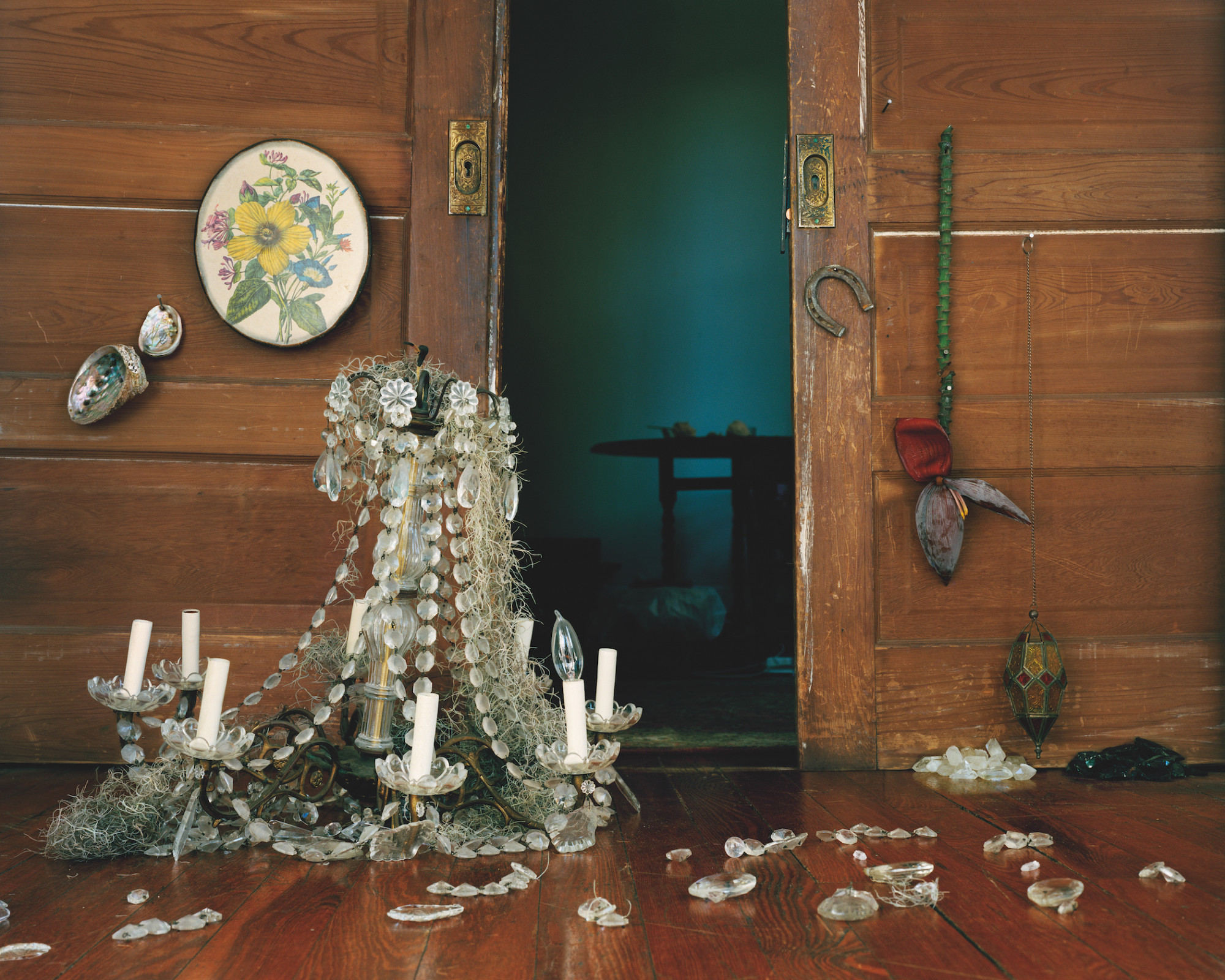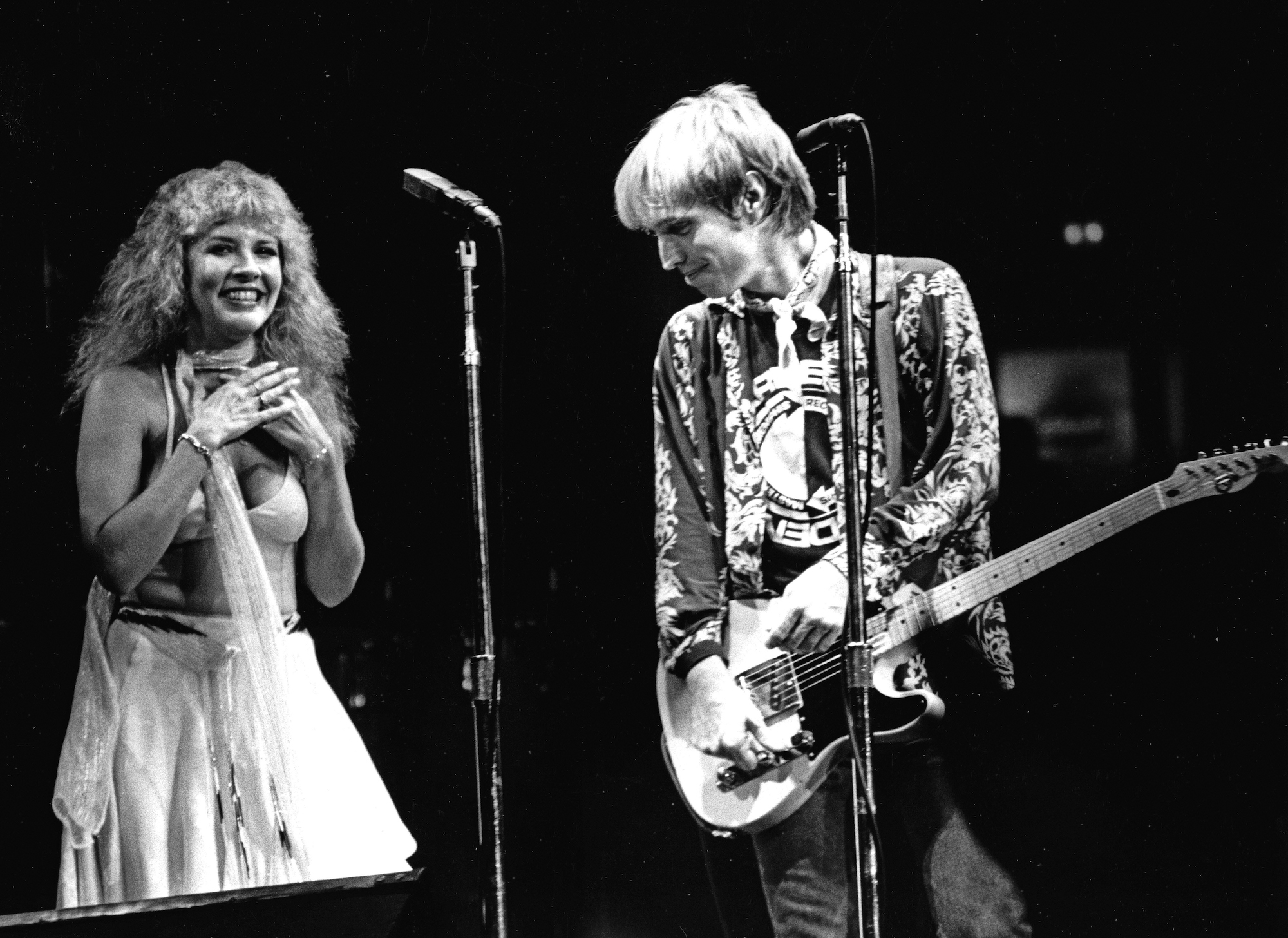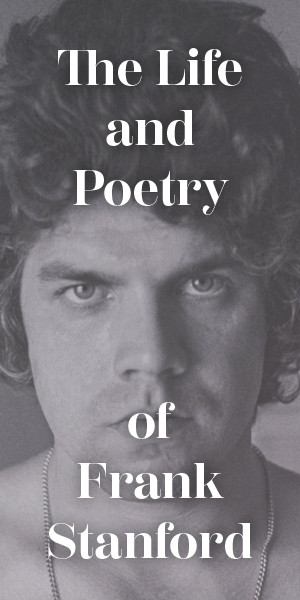
FrontRoom, 2017, a photo from the series Talisman by Kristina Knipe
"Insider" by Tom Petty: Stevie Nicks and Jane Benyo
The song that's inextricably tied to Florida and two women
By John Lingan
“I really feel I’ve come home,” Tom Petty told his crowd. The rock legend hadn’t performed in Gainesville, Florida, for thirteen years when he stopped there on his Highway Companion tour with the Heartbreakers in late September 2006. The band was a long-running arena rock institution by then, so even normal gigs were major operations, full of extravagant lighting and huge screens to ensure that even the rafters could see their heroes up close.
But Gainesville wasn’t simply another tour stop. Instead, Petty’s appearance was the occasion for a thirtieth anniversary blowout, commemorating the November 1976 release of the band’s debut record, Tom Petty and the Heartbreakers. The 8,000-seat Stephen C. O’Connell Center at the University of Florida sold out in only thirty minutes, and the crowd included travelers from New Jersey and California, as well as folks so local they began doing the Gator Chomp during “Don’t Come Around Here No More.” Guitarist Mike Campbell, looking resplendently Floridian in a swampy brown vest and his hair in short, tight braids, played an orange guitar emblazoned with the UF Gator emblem.
Their opening four songs, “Listen to Her Heart,” “Mary Jane’s Last Dance,” “I Won’t Back Down,” and “Free Fallin’,” are all on Petty’s epochal Greatest Hits and remain radio staples. Live, three decades into their public career, the Heartbreakers played them with an unrushed, heavy swing, letting the songs breathe and the individual musicians shine, Campbell and keyboardist Benmont Tench especially. They let the crowd scream with every familiar riff and sing with every beloved chorus, then moved on to the next well-known tune. Those four songs set the tone of mutual admiration between artist and audience, and some additional surprises only deepened the bond throughout the night.
Just past the midpoint of the set, a blond figure sashayed out from stage left in a glittering dark gown: Stevie Nicks, the Fleetwood Mac goddess and longtime auxiliary Heartbreaker. She and Petty of course sang their famous 1981 duet “Stop Draggin’ My Heart Around,” and Nicks even took lead on the group’s early rocker “I Need to Know,” which she had covered in ’81 on her Bella Donna tour, her first as a solo headliner.
The ecstatic atmosphere paused only for a three-song sequence about two-thirds of the way into the evening. First the band played “Southern Accents,” Petty’s protective, piano-led ballad about his regional identity, which he said he hadn’t performed since the Heartbreakers’ last Gainesville show. Despite a reverent Johnny Cash cover in the 1990s, the song was still a relative obscurity in his catalog and a remnant of the awkward Southern Accents tour, which featured Confederate flag iconography onstage. Petty later disavowed that display, though not “Southern Accents” or the album that shares its name, and by the Gainesville homecoming no one associated the singer with stars and bars. Instead, he was synonymous with unkillable radio fodder like the Greatest Hits warhorse “Learning to Fly,” which, fifteen years after its release as an up-tempo single in 1991, Petty had transformed into a spare acoustic sing-along for the Gainesville crowd.
But between those songs, Nicks was invited out again, this time to perform her other 1981 duet with Petty, “Insider,” which first appeared on his record Hard Promises. That studio version was a sorrowful ballad, but like most of Petty’s songs from those early years, it has a rousing chorus. Stan Lynch, the Heartbreakers’ original drummer, pushed “Insider” to dramatic extremes by moving between subtle cymbal pings and big, crashing fills. Tench added a plaintive keyboard line that echoed the sweeping melodies he laid on joyous singles like “Even the Losers.” The band played this song throughout their 1981 tour, bringing Nicks onstage for the occasion every time, and they included one of those performances on their 1985 live album Pack Up the Plantation! (the title of which was another unfortunate Dixie-ism during the Southern Accents era). But “Insider” more or less disappeared from Heartbreakers setlists for twenty-five years after that.
“This is one I wrote in 1981,” Petty introduced the song in Gainesville, strumming an acoustic guitar while Campbell tuned a mandolin. “We very seldom do it but I love to do it when we can.”
There were no drum fills in this performance; drummer Steve Ferrone stuck to tambourine. No soaring keyboard either, as Tench played pensive piano and let Campbell’s lilting high strings carry the countermelodies. The focus was squarely on Petty and Nicks’s harmonies and their narration of a relationship fallen apart. “I’m an insider / I’ve been burned by the fire,” they sang, facing each other instead of the audience. “And I’ve had to live with some hard promises / I’ve crawled through the briars.” It was the quietest, starkest moment of a momentous day.
Throughout the late ’70s and 1980s, Petty was like Bruce Springsteen’s hippie Gulf Coast cousin: a roots-rock hitmaker who sold untold millions of records and concert tickets through a steady stream of fist-pumping, half-twangy anthems. He was a calm, smiling presence on stage, not an acrobatic showman like Bruce, but Petty’s laid-back charm belied a serious work ethic and creative drive: He was one of the few rock acts from the 1970s to establish a groundbreaking music video career, one that lasted into the ’90s. He worked with Del Shannon and Johnny Cash, and was the youngest member of the Traveling Wilburys, where he sang group harmonies and co-wrote with Bob Dylan, Roy Orbison, and George Harrison, a damn Beatle. Petty and the Heartbreakers were Rock and Roll Hall of Fame inductees in 2002, the highest-profile lifetime achievement award of many that Petty received in the early twenty-first century.
And now, in 2006, Gainesville was doing its part to celebrate its favorite sons. The mayor deemed September 21 “Tom Petty and the Heartbreakers Day,” and presented each band member with keys to the city. Even Ferrone and guitarist Scott Thurston, relative newcomers to the band, were granted the same honor as Campbell, Tench, and bassist Ron Blair, Alachua County natives all. The perennially aloof, long-haired Petty, who never bothered with college, then received a UF Distinguished Achievement Award.
“I thank the university for making us distinguished people,” Petty said at the ceremony.
Behind his familiar laconic wit, Petty was genuinely grateful, and the inclusion of “Insider” in the setlist was proof. Like every Petty ballad, it was a reminder of the ragged creative soul that underpinned his crowd-pleasing tendencies and all those well-known radio anthems. For such a singles-focused artist, Petty created a shadow career in his acoustic, gentler, and otherwise non-rocking album cuts—moments where he showed his range as a writer, singer, and creative thinker. Ballads are where Petty indulged his artistic whims, shared his fears, expressed vulnerability, and spoke most directly to his audience—essential offerings from an artist who cultivated such closeness with his fans.
Petty began speaking through his ballads on his self-titled 1976 debut. “The Wild One, Forever,” though not as well known as the record’s singles, “Breakdown” and “American Girl,” was a defining artistic statement to match either one. While the former established Petty’s snarling guise (“I’m not afraid of you running away, honey / I get the feeling you won’t”) and the latter was the first of his many tributes to free-spirited young women living on their own terms, “Wild One” showed the true extent of his fascination and sympathy for outsiders:
They call you the wild one
Said, “Stay away from her”
Said, “She couldn’t love no one if she tried”
But then something I saw in your eyes
Told me right away
That you were gonna have to be mine
Musically the song feels more E Street Band than Heartbreakers, with a chiming piano intro and a full-band entrance on the muscular chorus. But purely as writing, this is a riskier, more romantic song than even “American Girl” or that classic’s spiritual cousin, “Free Fallin’.” Unlike those, “The Wild One, Forever” is not a sympathetic character sketch, it’s a pledge of devotion; not a portrait of someone else’s strength but a statement of defenselessness and desire.
The group’s lunkishly titled second album, You’re Gonna Get It!, came out in 1978 and was in general a leaner, heavier set of songs, epitomized by the stunning Byrds/Cheap Trick hybrid “Listen to Her Heart.” One exception was “No Second Thoughts”—not a ballad per se but a strummy acoustic novelty with uncredited bongos and Campbell playing an exotic sitar-sounding lead line. Many of Petty’s songs describe an unnamed “she” with complex emotional desires—for freedom and escape more often than romance—but to me, “No Second Thoughts” feels like a sequel to “The Wild One, Forever,” where Petty narrates the reality of following his free-spirited crush. I imagine it finds our heroine a few years later, after she’s tried to live on the straight path as a married woman. The singer has stayed in her life, patient and undemanding, and now she’s accepted that she needs to live as she’s meant to, as he knows her:
We’ll drive for the line now
There’s nothing to be lost
You and I will cross over
With no second thoughts
Here again, with the volume turned down, Petty veers away from the snarl in his early singles and makes plain the implicit promise that defined his whole songwriting persona, from “American Girl” to “Wildflowers”: to offer up a love and romance worthy of his muse.
Petty’s real-life muse at this time—and for the first twenty years of the Heartbreakers’ existence—was Jane Benyo, a blond, lissome Gainesville beauty. They met in high school and married in 1974; if “Wild One” isn’t directly about her, it captures the kind of young, lightning-strike bond that she and Petty shared for decades. But that kind of bond can be tumultuous, and after the two grew indispensable to each other, Petty became a grinding professional musician, often away from home. Benyo struggled with drug addiction and, according to the daughters she had with Petty, she suffered from lifelong mental illness. But she was also trying to find her way in a relationship that formed in adolescence and then continuously shifted under her feet.
In 1979, Petty’s career exploded at last, as Damn the Torpedoes went to No. 2 on the U.S. album chart and sold nearly three million copies. His most high-profile fan was the willowy, full-voiced singer in Fleetwood Mac, Stevie Nicks, who was as famous as a rock star could be in the late ’70s and whose songs and personal style perfectly embodied the kind of young female “wild one” Petty’s songs afforded such sympathetic consideration. Nevertheless, she struggled to fit her original material on LPs where she shared songwriting duties with Lindsey Buckingham and Christine McVie. Nicks was already obsessed with Petty’s first few albums and even told friends that she intended to somehow join the Heartbreakers. Instead, as she plotted a solo album, she told her manager she wanted to sound as much like Tom Petty’s band as possible.
“Stevie came to me around ’78,” Petty remembered later. “And she was this absolutely stoned-gone huge fan. And it was her mission in life that I should write her a song. And we were a little wary of Stevie. We didn’t quite know whether to like Stevie or not, because we kind of saw this big corporate rock band, Fleetwood Mac…in those days, nobody trusted that sort of thing and we just kept thinking, ‘What does she want from us?’”
An early session with Nicks was apparently too much for the Heartbreakers to handle. They weren’t used to guests in the studio and Nicks had a full entourage. They might have been triple-platinum, but that was nothing next to Fleetwood Mac in 1979. The band slunk away, and Petty recommended Torpedoes producer Jimmy Iovine.
Bella Donna took shape over the next few years, with Iovine producing. Nicks told him in no uncertain terms, “I want to be the girl Tom Petty.” She ingratiated herself into Petty’s world in other ways: Mike Campbell and Stan Lynch were enlisted to play on the track “Outside the Rain,” Petty regularly consulted with his friend Iovine about tracks in progress, and Nicks befriended Jane Benyo. As anyone who knows of Fleetwood Mac’s predilections in this era can guess, this friendship didn’t improve Benyo’s relationship to drugs, so Petty soon found himself increasingly close to a famous, influential star who was eager to support his career, but still stuck in a loop with a troubled, unpredictable partner.
As the Bella Donna sessions wound down in spring 1981, Petty and Iovine agreed that the record lacked a single. The moment had come for Petty to contribute the song that Nicks had wanted from him for years. He created it in the studio on a whim, supposedly in less than five minutes. Standing next to Tench, who accompanied on keyboards, the haunting, fragile chords and lyrics to “Insider” spilled out of him, then they took it to the band.
You can almost read the crisis in Petty’s mind from the fact that this song, of all songs, spewed out of his subconscious. “You’ve got a dangerous background,” it begins, and he proceeds to call his partner “the dark angel.” The wild one, it turns out, isn’t an easy partner. “Insider” is a remarkably succinct portrait of codependence: “I’m the one left in the dust / I’m the broken-hearted fool / Who was never quite enough.”
Petty recognized that he’d captured something elemental. Hearing this soulful confession enlivened by his band and Nicks’s forceful harmonies (she called their vocal chemistry “intense, fiery”), Petty saw that he’d unintentionally arrived at one of his best songs. After they got the take, he told her, almost bashfully, that he needed to keep it for himself after all.
As a compromise, Iovine provided Nicks with “Stop Draggin’ My Heart Around,” which the Heartbreakers had already recorded in full. By coincidence, the song was a high-volume version of “Insider,” another lament for doomed love and self-destruction. Nicks sang half the verses, recreating the preexisting track as a duet when it was never meant as such, and it became the lead Bella Donna single. Eventually “Stop Draggin’” went to No. 3, Nicks’s solo high point and the best-charting Heartbreakers performance to boot. Another hit, as if Tom Petty couldn’t help but write them.

Stevie Nicks and TomPetty, 1982 © ScottWeiner/MediaPunch/Alamy
“Insider,” meanwhile, remained a deep cut, buried on side B of Hard Promises, and “Stop Draggin’ My Heart Around” overwhelmed any of that album’s singles. But Petty was clearly moved by the experience of writing it. The song improved his confidence, for one; on every record thereafter, he found ways to stretch himself beyond the melodic hard rock that he mastered with Iovine.
There are examples of this expansion in every part of his catalog. The underrated 1987 LP Let Me Up (I’ve Had Enough) features some of Petty’s most dated production, but it also has “It’ll All Work Out,” a weary acoustic waltz and the closest he’s come to a Pogues-style Irish weeper. His first solo album, 1989’s Full Moon Fever, was known for its massive singles “Free Fallin’” and “Runnin’ Down a Dream,” but it also had room for a gossamer Roy Orbison tribute, “A Face in the Crowd,” and a genuine lullaby, “Alright for Now.” Petty also used ballads to explore his feelings about the Florida home he left behind; not only “Southern Accents,” where his downtrodden narrator considers working in Orlando “if them orange groves don’t freeze.” In the stark Wildflowers outtake “Harry Green,” performed only with acoustic guitar, Petty remembers a troubled high school classmate who died early, sketching a world of football-playing good ol’ boys and sexual repression. And as Petty aged into a legacy touring artist, he treated some of his most defining singles, “I Won’t Back Down” and “Learning to Fly,” to solo coffee-house reinterpretations so that his audience could sing the beloved choruses along with him.
“Insider” isn’t explicitly about Florida, but it clearly emanated from the part of Petty that was attached to his beloved Jane for better or worse. Writing it was an emotional purge that surprised even him. I suspect that’s why he played it for nearly the first time in a quarter century during that three-song suite in Gainesville, the heart of the most intimate moment of a long-delayed homecoming. He brought an old friend along to supply her trademark raspy harmonies, and Campbell’s gentle mandolin underlined the song’s melodicism and heartbreak. It wasn’t the best-known song that this officially distinguished person played that night, only the most personal and revealing.
This story was published in the print edition as “Inside Voice."




